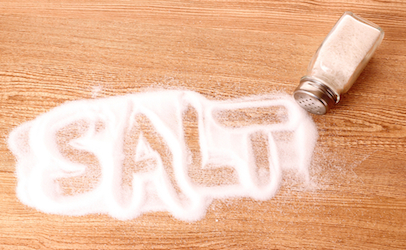 ministration Commissioner Margaret Hamburg is promising in media interviews that new sodium guidance, probably dependent on voluntary compliance by the food industry, is coming soon.
ministration Commissioner Margaret Hamburg is promising in media interviews that new sodium guidance, probably dependent on voluntary compliance by the food industry, is coming soon.The American diet of processed and restaurant foods — not so much the salt shaker on the table — is responsible for our average per-person consumption of 3,400 milligrams of sodium each day. Groups such as the American Heart Association and Institute of Medicine would like to see that number cut by about one-third.
Sodium is added to food so it doesn’t taste so bland, but salt intake at high levels contributes to high blood pressure, strokes, and other health problems. However, there have also been health studies showing the pitfalls of reduced sodium consumption.
That may be why Hamburg wants to stay on the high ground of reducing America’s overall sodium consumption, but doing so through voluntary actions from food manufacturers and through individuals acting in consultation with their doctors.
Even former New York City Mayor Michael Bloomberg favors reduced sodium consumption and launched his National Salt Reduction Initiative, a voluntary partnership approach, to help get salt levels down. Walmart, ConAgra Foods, and Subway restaurants are among those pledged to make sodium reductions in their menus.
Many say the food industry could make significant reductions in sodium use if only it would get more creative on flavorings.
High sodium intake is not a problem that is uniform throughout the population. People older than 50, those with high blood pressure, diabetes and chronic kidney disease, and African-Americans should eat no more than 1,500 milligrams of sodium per day, according to the American Heart Association.
In addition to taste, sodium can be used to extend shelf life and even prevent the growth of dangerous bacteria. The food industry wants any sodium dictates to be based only on “rigorous assessment of all available scientific evidence.”





